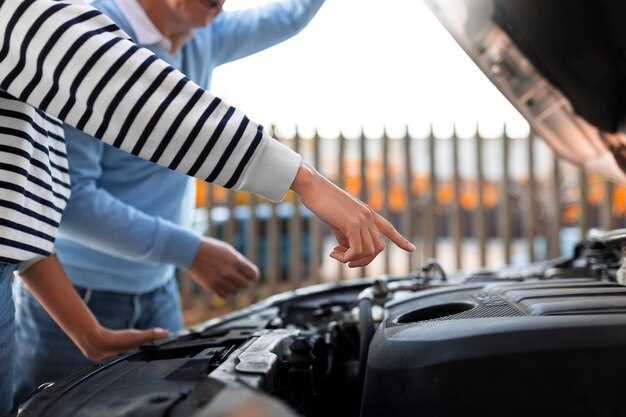
The radiator is an essential component of your vehicle’s cooling system. It plays a crucial role in dissipating heat generated by the engine, preventing overheating and ensuring optimal performance. However, like any part of your car, the radiator can experience wear and tear over time, leading to potential issues that can compromise your vehicle’s efficiency and safety.
Recognizing the signs that your car radiator needs repair is vital for maintaining your vehicle’s overall health. Ignoring these indicators can result in more severe damage and costly repairs down the line. This article will explore the common symptoms of radiator problems and provide guidance on what to check if you suspect that your radiator requires attention.
From strange noises and visible leaks to warning lights on your dashboard, being aware of these signs can help you take proactive measures. Understanding what to inspect and how to address potential radiator issues will not only enhance your driving experience but also prolong the lifespan of your vehicle. Stay informed and ensure your radiator is functioning efficiently to avoid overheating and potential engine damage.
Unusual Temperature Gauge Readings
The temperature gauge in your car plays a crucial role in monitoring the engine’s temperature. When this gauge shows abnormal readings, it can indicate potential issues with the radiator or other cooling system components. It’s essential to understand what these unusual readings might suggest.
High Temperature Readings: If the gauge consistently points towards the red zone or exceeds the normal operating range, it signifies that your engine is overheating. Overheating can occur due to low coolant levels, a malfunctioning radiator fan, or clogs in the radiator itself. Ignoring this warning can lead to severe engine damage.
Fluctuating Readings: If the temperature gauge moves erratically, experiencing sudden spikes and drops, it could suggest issues such as a failing thermostat or problems with the coolant flow. Such fluctuations can disrupt the engine’s overall performance and lead to overheating.
Low Temperature Readings: On the other hand, if the gauge registers abnormally low temperatures, it may indicate that the engine is not reaching optimal operating temperature. This situation can lead to increased fuel consumption, as the engine may run rich to compensate for insufficient warmth.
Regardless of the type of unusual temperature readings you encounter, it’s essential to address the problem promptly. Regular maintenance checks and being aware of your vehicle’s performance can help you identify these issues early and prevent costly repairs in the future.
Signs of Coolant Leaks Under the Vehicle
One of the most critical indicators that your car radiator may need attention is the presence of coolant leaks beneath your vehicle. Detecting these leaks early can prevent serious engine damage and costly repairs. Here are some signs to look for:
1. Puddles of Fluid: After parking your vehicle, check the ground underneath. If you notice a puddle of fluid, particularly green, orange, or pink liquid, this might be coolant. Coolant typically has a sweet smell, which can help you identify it.
2. Frequent Refills: If you find yourself frequently topping off your coolant reservoir, this could indicate that coolant is escaping somewhere in your system. It’s essential to monitor your fluid levels regularly.
3. Engine Overheating: A leaking coolant system can lead to insufficient coolant levels, causing your engine to overheat. If your temperature gauge consistently rises above normal, it could be a sign of a coolant leak.
4. Hissing Sound: When coolant leaks onto hot engine components, it may produce a hissing sound. This noise can signal that coolant is escaping and potentially evaporating quickly, which necessitates immediate attention.
5. Colored Stains: Look for stains on the ground or the underside of your car. If you see dried, crusty residues that match the color of your coolant, this could indicate a slow leak.
6. Low Pressure in Cooling System: If you notice that your vehicle’s heating system is not functioning as effectively as it should, it may be a result of low pressure caused by coolant leaks.
Identifying coolant leaks early and addressing them promptly can help maintain your vehicle’s health and protect your engine from severe damage. Regular inspections and awareness of these warning signs are essential for preventing costly repairs.
Check for Rust and Corrosion on Radiator Fins
The radiator fins play a crucial role in the cooling process of your vehicle’s engine. They facilitate the transfer of heat from the coolant to the air, ensuring optimal engine temperature. However, over time, these fins can become susceptible to rust and corrosion, which can significantly hinder their efficiency.
Rust forms when moisture and air come into contact with metal parts, leading to oxidation. Corrosion, while similar, can result from oil leaks or chemical exposure, further compromising the radiator’s integrity. Regular inspections of your radiator fins can prevent overheating issues and potential engine damage.
To effectively check for rust and corrosion, follow these steps:
| Step | Action |
|---|---|
| 1 | Open the hood and ensure the engine is cool. |
| 2 | Inspect the radiator visually, looking for discoloration, flaking, or any areas with a rough texture. |
| 3 | Use a flashlight to illuminate the fins and check for hidden spots of rust or corrosion that may not be immediately visible. |
| 4 | If rust is found, assess its extent. Surface rust can often be treated, but significant corrosion may require professional repair or replacement. |
| 5 | Consider cleaning the fins gently with a soft brush and a rust-removal solution to prevent further deterioration. |
Addressing rust and corrosion on your radiator fins is essential for maintaining your vehicle’s cooling system efficiency. If you notice significant damage, it is advisable to consult with a professional mechanic to evaluate whether repair or replacement is necessary.
Inspect for Hissing or Bubbling Noises from the Engine
One of the key indicators that your car’s radiator might need repair is the presence of hissing or bubbling noises coming from the engine compartment. These sounds often suggest that the cooling system is not functioning properly. Hissing noises can indicate a leak in the radiator or a loose hose, while bubbling sounds may be a sign of coolant boiling due to overheating.
When inspecting these noises, pay close attention to the engine temperature gauge on your dashboard. If the gauge is reading higher than normal while you hear these sounds, it’s critical to stop the vehicle and cool it down. Allowing the engine to run at high temperatures can cause severe damage to various components, including the engine itself.
To further diagnose the issue, carefully pop the hood when it is safe to do so and listen closely for the source of the sound. If you locate the hissing or bubbling near the radiator or coolant hoses, there may be a breach where coolant is escaping. Additionally, check for any visible signs of leaks, such as puddles of coolant under the vehicle or residue around the hoses and radiator.
If these noises are persistent, it’s advisable to have a professional technician evaluate the cooling system. Addressing hissing or bubbling noises promptly can prevent more serious issues and costly repairs down the line.
Monitor Engine Overheating During Operation

Keeping an eye on engine temperature is crucial for ensuring your vehicle runs smoothly. Overheating can lead to serious damage and costly repairs, making it vital to recognize the signs early. Here are key points to monitor during operation:
- Dashboard Temperature Gauge: Regularly check the temperature gauge on your dashboard. A rising needle can indicate a potential overheating issue.
- Warning Lights: Be aware of any warning lights that may illuminate. The engine temperature warning light is a clear signal that the engine is exceeding safe operating temperatures.
- Unusual Noises: Listen for any strange sounds, such as knocking or pinging, which could indicate that the engine is overheating.
In addition to visual indicators, pay attention to the following symptoms:
- Steam from the Engine: Steam escaping from the engine compartment is a sign that coolant is boiling and the engine is excessively hot.
- Burning Smell: A hot engine may produce a burning odor, often caused by overheated components.
- Loss of Power: An overheating engine may lead to noticeable power loss or sluggish acceleration.
Take immediate action if you notice these signs:
- Pull Over Safely: If the engine begins to overheat, pull over to a safe location and turn off the engine.
- Check Coolant Levels: Once it’s safe, inspect the coolant reservoir for proper coolant levels.
- Look for Leaks: Examine the area around the radiator and engine for any leaks or puddles of fluid.
By monitoring engine temperatures diligently and recognizing these signs promptly, you can prevent severe engine damage and ensure the longevity of your vehicle.
Evaluate Performance Issues When Accelerating
When you experience performance issues while accelerating, it’s crucial to assess whether your car’s radiator system is contributing to the problem. A properly functioning radiator is essential for regulating engine temperature and preventing overheating. If you notice any of the following symptoms, further investigation may be warranted.
1. Overheating Engine: If the engine temperature gauge is consistently high while accelerating, this may indicate that the radiator is not dissipating heat effectively. Insufficient coolant flow can result in overheating, leading to reduced engine performance.
2. Decreased Acceleration Power: Poor engine performance during acceleration can suggest a lack of adequate cooling. An overheating engine may enter a protective mode, limiting power output to prevent damage.
3. Unusual Sounds: Listen for strange noises such as hissing or bubbling when you accelerate. These sounds can signify coolant boiling or a failing radiator, which can impact engine performance.
4. Engine Warning Light: If the check engine light illuminates while experiencing acceleration issues, it may be linked to overheating caused by radiator inefficiencies. Use an OBD-II scanner to check for diagnostic trouble codes that may point to cooling system concerns.
5. Fluctuating Temperature Reading: Inconsistent temperature readings during acceleration can indicate a malfunctioning radiator or a failing thermostat, affecting engine efficiency and power delivery.
Consider these factors carefully. If you suspect radiator-related issues, it is advisable to consult with a professional mechanic to ensure proper diagnostic evaluation and repairs.














